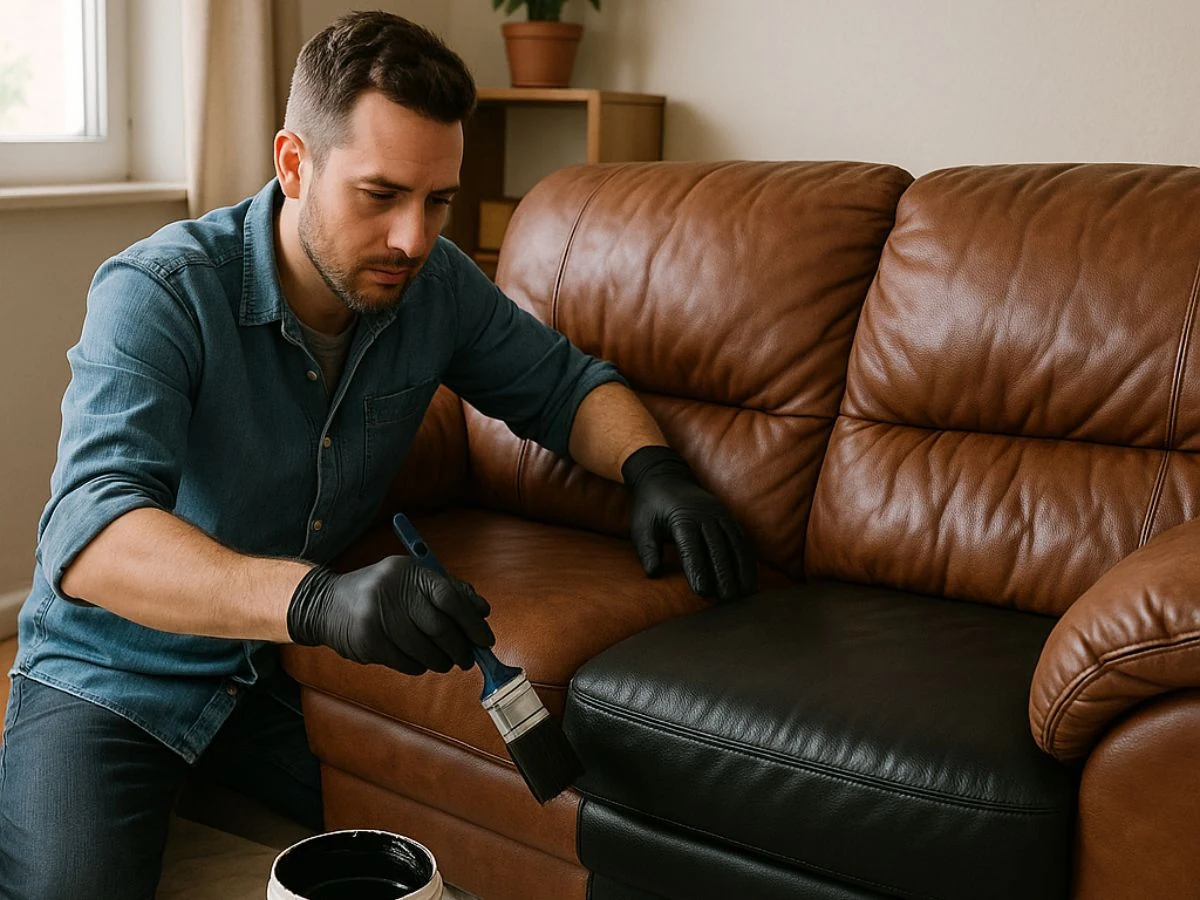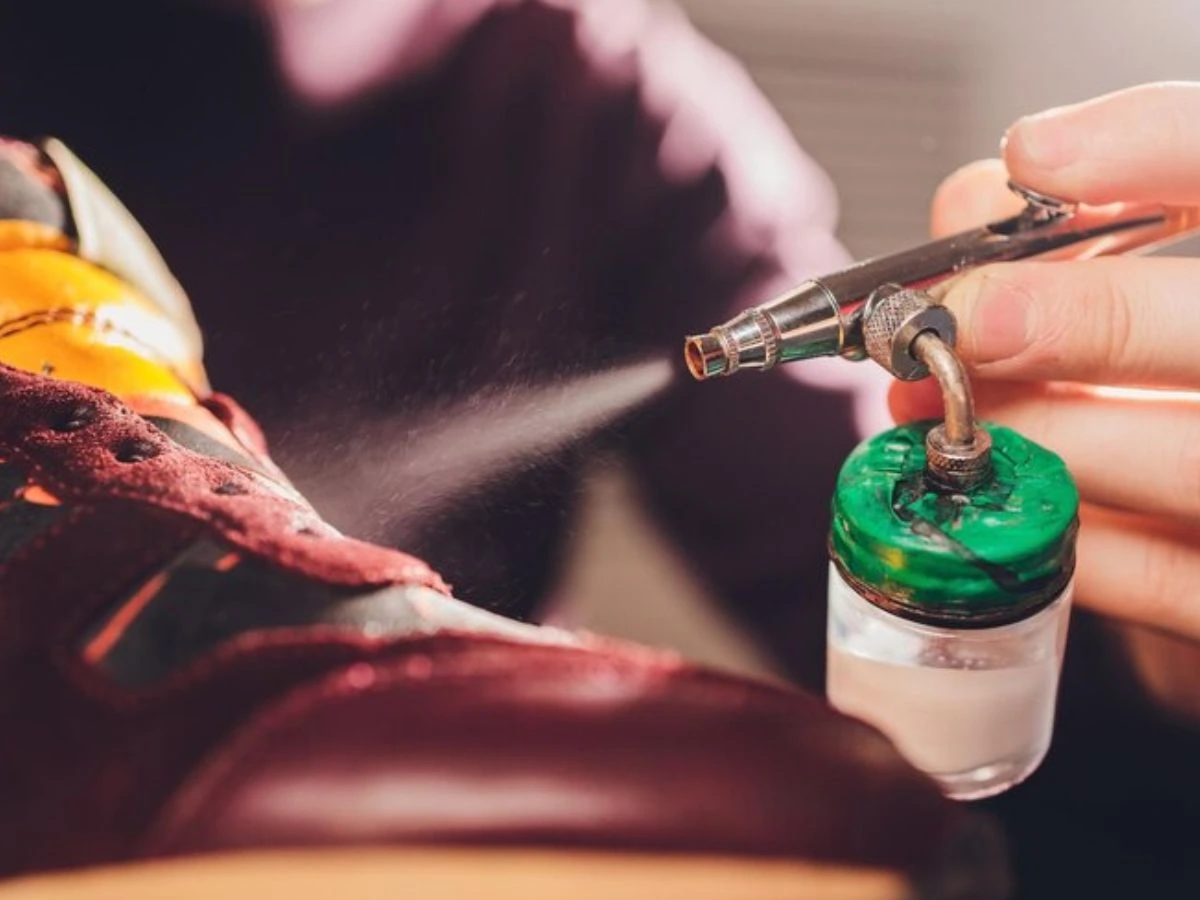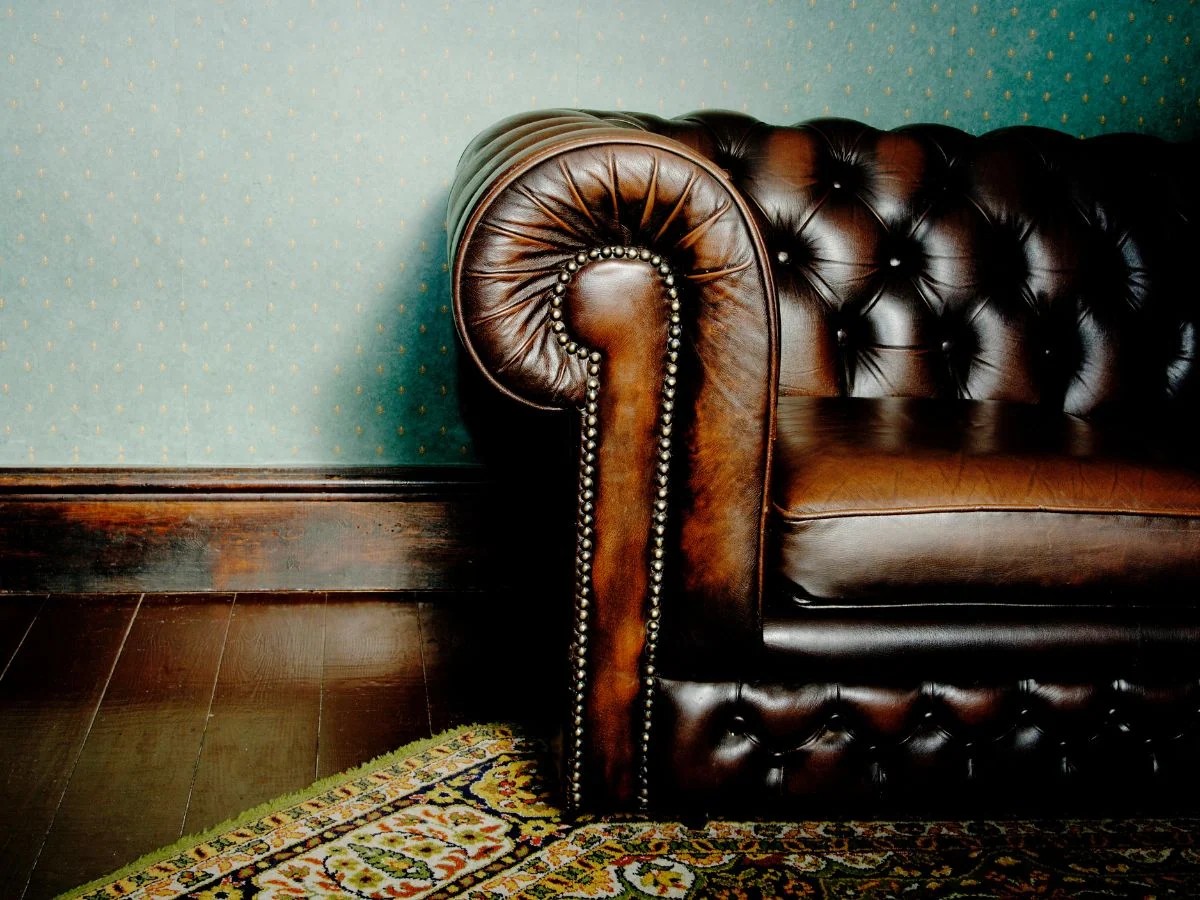A leather sofa is more than just a piece of furniture—it’s often the centerpiece of a living room. When scratches, fading, or worn patches appear, it’s tempting to grab a DIY leather paint kit and “fix” it yourself. Social media makes it look easy: wipe, paint, and enjoy a brand-new sofa.
Unfortunately, what those quick tutorials don’t show are the long-term problems that come with painting leather at home. As experienced leather restoration specialists, we’ve seen countless DIY attempts go wrong—leading to cracked finishes, uneven colour, and expensive repairs.
Before opening that kit, here’s what you need to know about the hidden costs and why DIY often does more harm than good.
Why DIY Leather Painting Rarely Works
1. The Wrong Products
Leather is not like wood, fabric, or plastic. It’s a natural material with unique fibres, oils, and a porous surface that needs specialist treatment. Unfortunately, most DIYers don’t realise this and reach for unsuitable products:
-
Acrylic paints marketed as “all-surface”
-
Vinyl repair kits designed for synthetic leather
-
Cheap “leather paints” without flexibility additives
The result? These coatings sit on top of the leather rather than bonding with it. Within months, you’ll notice peeling, stiffness, or cracking. This is one of the biggest risks of DIY recolouring for blotchy, cracked or uneven leather.
By contrast, professional colourants penetrate deep into the fibres, ensuring the leather stays soft, breathable, and flexible while restoring its natural look.
2. Skipping Essential Preparation
Preparation is 70% of the work in leather restoration. Professionals spend hours cleaning, repairing, and conditioning before any colour is applied. DIY projects often skip these steps:
-
Not removing body oils and dirt fully
-
Ignoring cracks or scratches before painting
-
Failing to deglaze the original finish
-
Skipping pH balancing, which ensures dyes bond properly
The result? Paint won’t adhere evenly and soon begins to peel. These mistakes are part of the hidden dangers of DIY restoration
3. Application Technique Errors
Even if you buy the right paint and prepare the surface, applying it correctly is a challenge. Common mistakes include:
-
Using household brushes that leave streaks
-
Applying thick, heavy coats instead of thin layers
-
Inconsistent pressure, causing colour variations
-
Ignoring the natural movement of leather
Professionals use airbrushes and sponges to achieve smooth, even coverage that bends naturally with the leather. That’s why professional leather cleaning vs DIY shows such a dramatic difference in results.

The Hidden Costs of DIY Leather Painting
Financial Impact
DIY looks cheaper, but it rarely is:
-
DIY paint kit: £30–£60
-
Supplies (brushes, cleaners, sandpaper): £20–£40
-
Replacement sofa if DIY fails: £800–£3,000+
Worse, many products expire after opening, so you can’t reuse them for future touch-ups. What started as a £60 “budget fix” often snowballs into a costly replacement.
According to industry research, 65% of homeowners attempt DIY furniture repairs, but many end up regretting the decision once repairs fail.
Time Investment
DIY projects are also far more time-consuming than they appear:
-
Research & product selection: 2–3 hours
-
Cleaning & prep: 4–6 hours
-
Application & drying: 8–12 hours
-
Curing & finishing: 24–48 hours
That’s an entire weekend gone—and no guarantee of success. Professionals can achieve superior results in a single day.
Emotional Toll
It’s not just money and time. DIY failures can also be emotionally draining:
-
Frustration when paint cracks within weeks
-
Stress from damaging a sofa you love
-
Disappointment in the finish
-
Regret about not calling a professional sooner

Choosing the Right Leather Paints (and Why Most DIYers Don’t)
Not all paints are equal. Professionals carefully choose between dyes and paints based on the sofa’s condition, colour, and leather type. Here’s a breakdown:
-
Acrylic Leather Paint – Flexible, durable, suitable for light recolouring.
-
Angelus Leather Paint – High-quality, professional-grade with even coverage.
-
Leather Dye – Penetrates fibres for dramatic colour changes and long-lasting results.
DIY kits rarely explain these differences. Use the wrong product, and your sofa’s appearance and feel can be permanently ruined.
Troubleshooting Common DIY Problems
Most homeowners face these challenges after painting:
-
Patchy Coverage – From poor cleaning or skipped preparation.
-
Peeling Paint – Caused by regular paint, not specialist leather paint.
-
Cracks – Thick coats that don’t flex with the sofa.
While some small issues can be sanded and repainted, serious problems often require full professional recolouring—adding to your costs.

Longevity: DIY vs Professional Recolouring
How Long Does DIY Really Last?
One of the biggest differences between a quick DIY paint job and professional leather recolouring lies in durability. While painting your sofa at home might look fine for a short time, the results rarely hold up.
DIY Leather Paint Lifespan:
-
Usually 6–18 months before cracking or fading
-
Paint layer stiffens and can feel plastic-like
-
Flexing causes peeling and flaking
-
Colour often wears unevenly across cushions and armrests
Professional Recolouring Lifespan:
-
Typically 5–7 years when cared for properly
-
Keeps leather soft, breathable, and flexible
-
Restores the natural look and touch of genuine leather
-
Wears evenly and can be refreshed with simple maintenance
Why Professional Results Last Longer
Professionals don’t just “paint” leather—they restore it through a process grounded in leather chemistry. Each step is designed to protect the fibres and ensure colour bonds deeply with the surface:
-
Deep cleaning to remove oils, dirt, and residues
-
pH balancing to prepare the leather for recolouring
-
Application of eco-friendly dyes that bond at a molecular level
-
Protective finishing coats that resist UV rays and daily wear
This multi-step method is why expert recolouring delivers results that DIY kits can’t replicate.
In situations where damage is severe or a complete makeover is needed, professional upholstery services may be the better option. Skilled upholsterers can restore shape, replace padding, and achieve a finish that looks like new—something DIY methods can’t offer.
Maintenance and Protection After Recolouring
Even after restoration, how you care for your sofa makes a huge difference to how long it lasts. Here are a few golden rules:
-
Wipe regularly with a soft, dry cloth to remove dust
-
Keep leather out of direct sunlight to prevent fading
-
Avoid harsh cleaners and abrasive products
-
Apply professional-grade conditioners or finishers for extra protection
-
Never use spray paints or household waxes—they damage the surface
Adding a clear protective finish can help repel spills and stains while preserving the smooth look. With these simple habits, your sofa will stay vibrant and supple for years to come.
Why a Professional Survey Is Worth It
Booking a professional leather assessment gives you more than just a price quote—it provides expert insight into your furniture’s exact needs:
-
Identifying the leather type and correct treatments
-
Spotting hidden cracks, dryness, or wear
-
Matching colours precisely to the original tone
-
Recommending tailored restoration plans
This eliminates guesswork and ensures your sofa gets the treatment it truly needs.
Long-Term Value
At first, DIY might appear cheaper. But once you factor in redoing the work, replacing damaged furniture, or living with unsatisfactory results, the “low cost” disappears quickly. Professional restoration, on the other hand, is an investment:
-
Extends the lifespan of your sofa by 5–10 years
-
Prevents irreversible damage
-
Avoids wasted money on trial-and-error kits
-
Maintains or even improves resale value
Conclusion
Your leather sofa is more than a seat—it’s a centrepiece in your home. While DIY painting seems like a shortcut, it often leads to peeling finishes, stiff textures, and costly mistakes.
Instead, trust experts who can deliver results that last for years. LeatherXpert’s team combines specialist techniques, eco-friendly products, and years of experience to restore your furniture beautifully.
Don’t risk damaging your sofa. Contact LeatherXpert to schedule your free, no-obligation assessment today!


